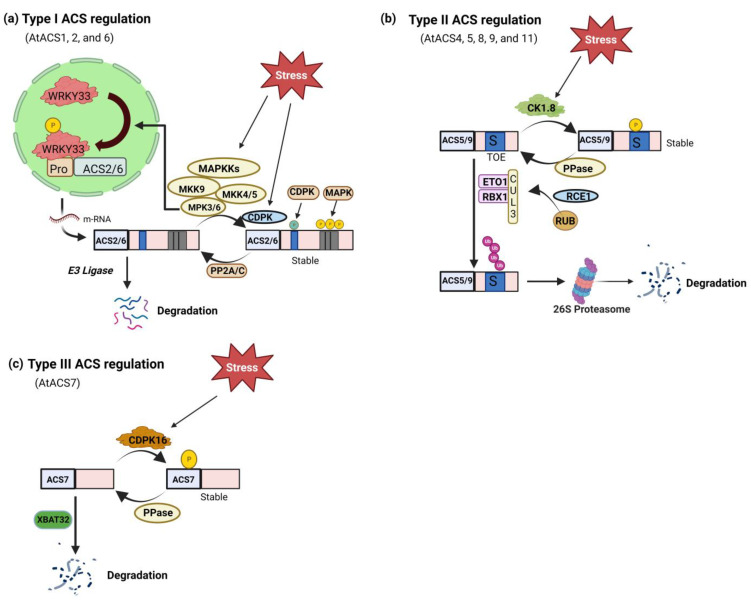Figure 2.
Post-translational regulation of ACS. (a) Arabidopsis type I ACS transcriptional and translational control by stimuli-responsive MAPK3/6 (mitogen-activated protein kinase) pathway. The MPK3/MPK6 phosphorylation of ACS2/ACS6 results in the stability of the ACS protein. In addition, MPK3/MPK6 activation through WRKY33, another MPK3/MPK6 substrate, similarly upregulates the expression of the ACS2 and ACS6 genes. Cellular ACS activity and ethylene production are significantly increased by dual-level modulation of Type I ACS by MAPKs and CDPKs (calcium-dependent protein kinase). There have also been discovered phosphatases (PP2A/C) that play a role in the dephosphorylation of ACS2/ACS6. (b) ETO1 (ETHYLENE OVERPRODUCER 1) containing E3 ligases that are capable of recognizing the TOE (Target of ETO1) domain in the C-termini of Type II ACSs, such as Arabidopsis ACS5, stabilize these proteins. The stability of Type II ACS protein is hypothesized to be controlled by CDPK phosphorylation, which is thought to play a role in this ubiquitination process. (c) Type III ACS isoform phosphorylation and stability modulation. A CDPK may phosphorylate the catalytic domain of the Type III ACS Arabidopsis ACS7, which is thought to be involved in ethylene production during root gravitropism. The ubiquitin-26S proteasome pathway, which requires the XBAT32 (XB3 orthologs 1 in A. thaliana) E3 ligase, may degrade ACS7.

